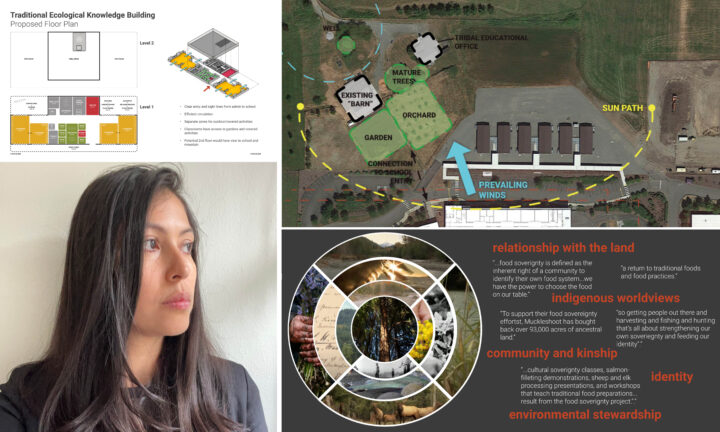Alexandra Holakiewicz Assoc. AIA (she/her)
Designer | Mahlum Architects Inc.
My name is Alexandra Holakiewicz, and I have been in the industry now for 10 years and am currently a designer at Mahlum Architects. I have spent my career focusing on educational design and finding ways to transform spaces that support educational aspirations and innovative teaching methods. The visioning work that I have been involved in focuses on making schools more relevant, building stronger relationships with students, and creating community connections. I have also devoted myself as a person and designer to continue to strengthen my cultural competency. I recognize the importance of seeing architecture as a way to address social issues, and to not only make architecture reachable but relatable. I focus on the power of identity and giving a voice to those who are historically unseen and unheard.
As a designer specialized in the education and equity sectors, I feel it’s my responsibility to ensure we are reaching disadvantaged and underrepresented communities through inclusive design and a commitment to social justice. The design decisions we make have a lasting impact on future generations of students. Through my designs, I strive to cultivate connection, representation, and a sense of belonging. As a woman of color who would have personally benefited from this as a young student, this work is more than just a job for me; it’s a personal mission of mine.
CURIOSITY in design is…
Being open-minded to the idea that there are many different ways to approach design. It’s about being proactive to understand the varying relationships communities have with space. It’s about being empathetic to people and their unique stories and finding ways to let it drive design.
Who or what inspires you?
There are four major things that inspire me:
My family – who always taught me empathy and to do what I can to give back to those that have no voice.
My university professor John Paul Jones inspired me to think more deeply about design and how to humanize architecture and make it more representative of the people.
After the death of George Floyd, it made me re-evaluate how I saw the world and interrogate how my own personal life has been impacted and marginalized in a system.
The work our JEDI team is doing at Mahlum that centers on BIPOC community voices, and the research that is happening to uncover new design outcome approaches that emphasize the identity of black and brown individuals.
What is your ultimate goal when it comes to your work? What do you want to contribute?
My ultimate goal is to do what I can to devote my work to repair and reconstruct a broken history that has plagued this country. I am dedicated to understanding who, why, and how people have been impacted by systems that were meant to bring underrepresented groups down. I am looking backward and looking forward at the same time, and I hope to find new ways for design to reflect and empower BIPOC. By relinquishing power and putting it back into BIPOC hands, there are opportunities in design to bring back lost cultural identities and celebrate what historically wasn’t considered beautiful or valued.
How should community influence design?
Design should reflect the spirit of a community’s culture. It should include the voices, offer familiarity and placeness. Design should bring to light a certain memory and comfort for the people using the space. The design should empower and imagine a new future for underrepresented groups, while also being used as a vessel to reveal their lost and forgotten stories.





